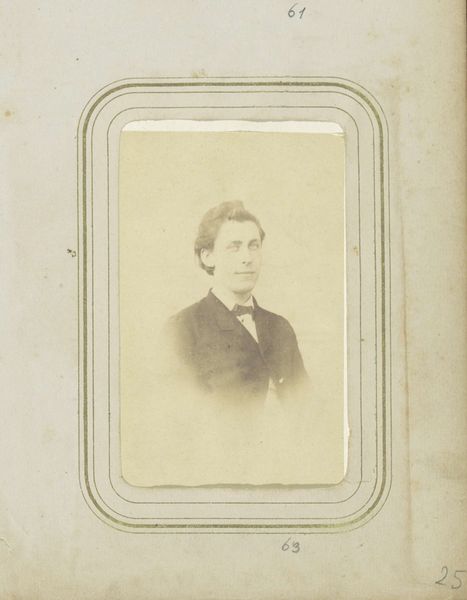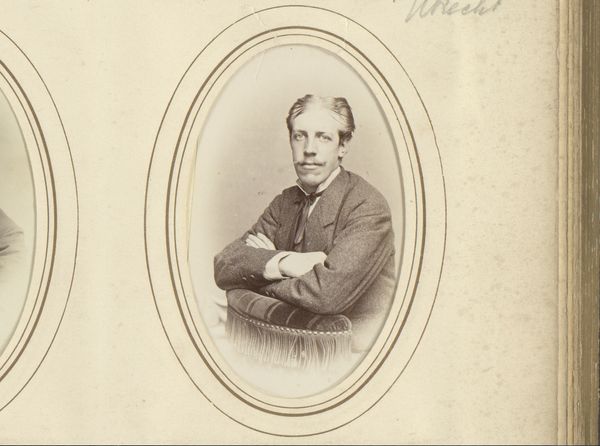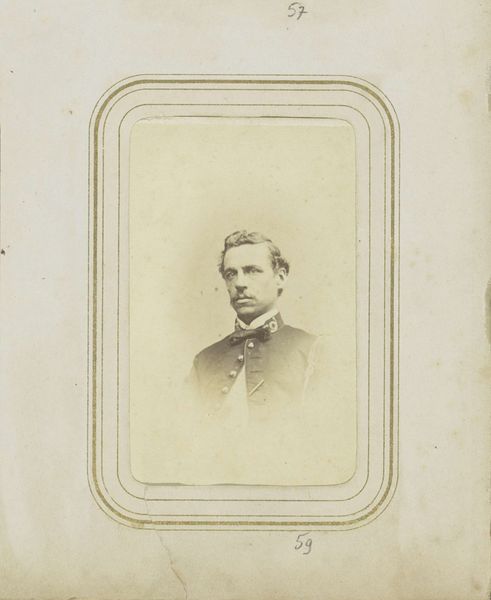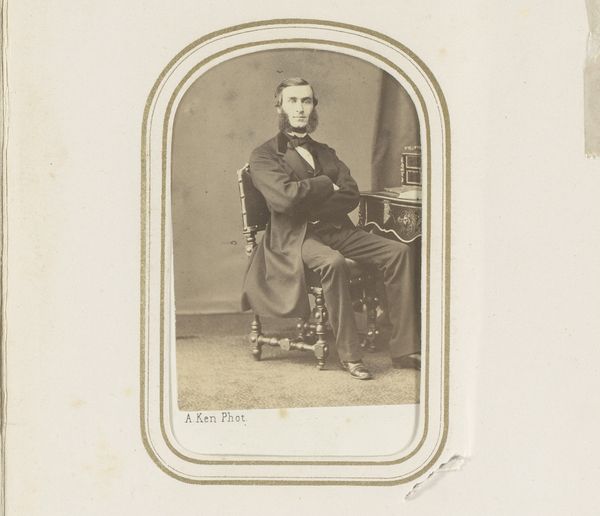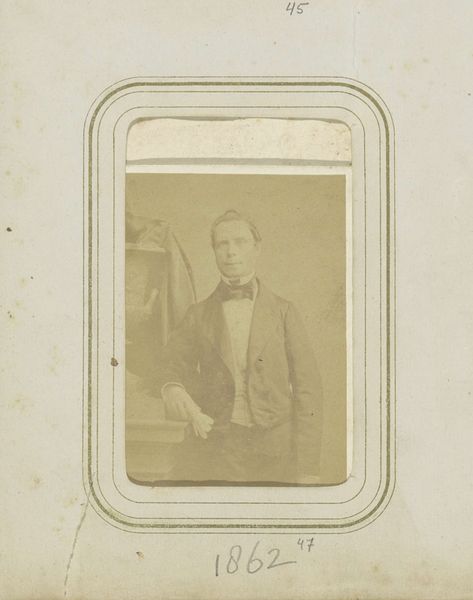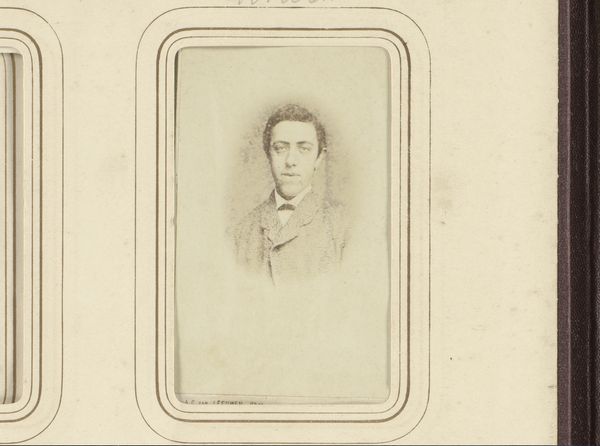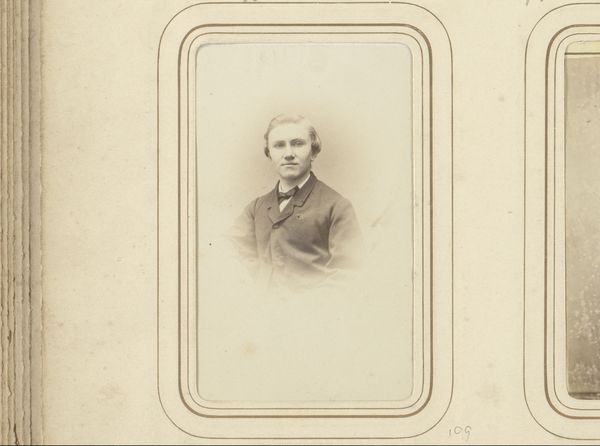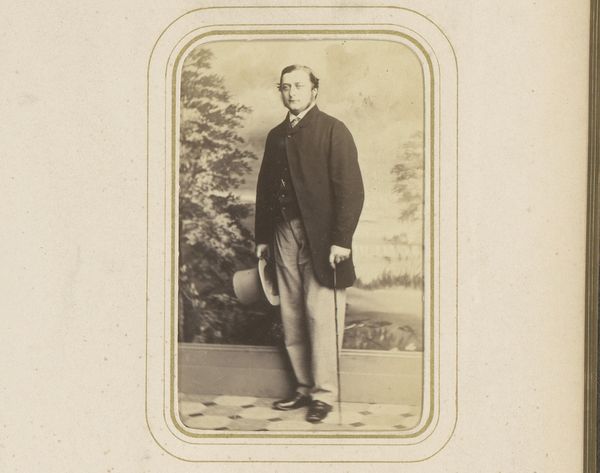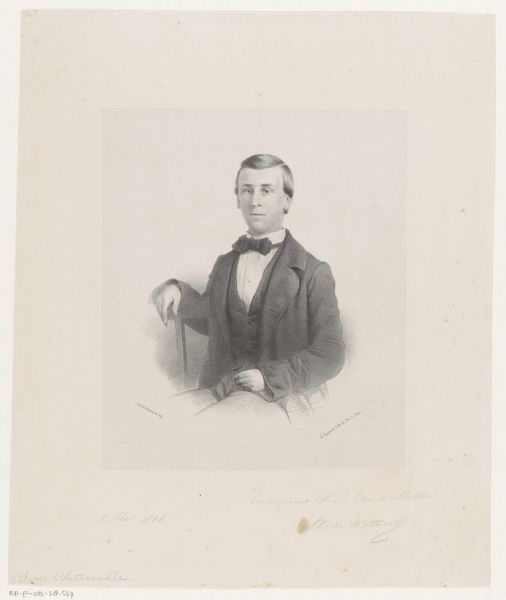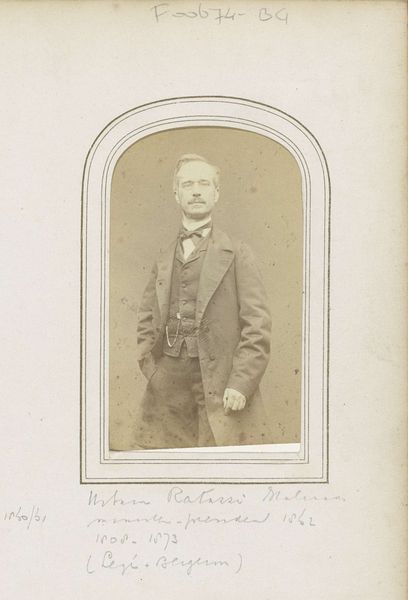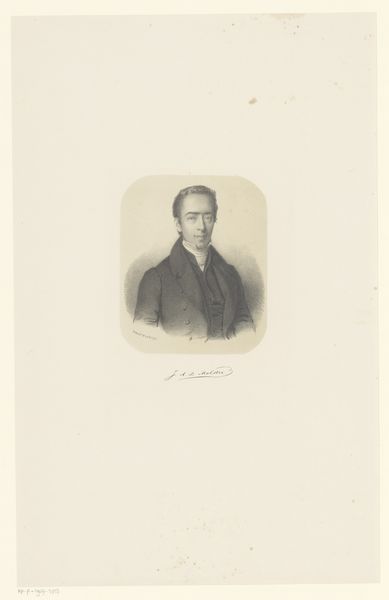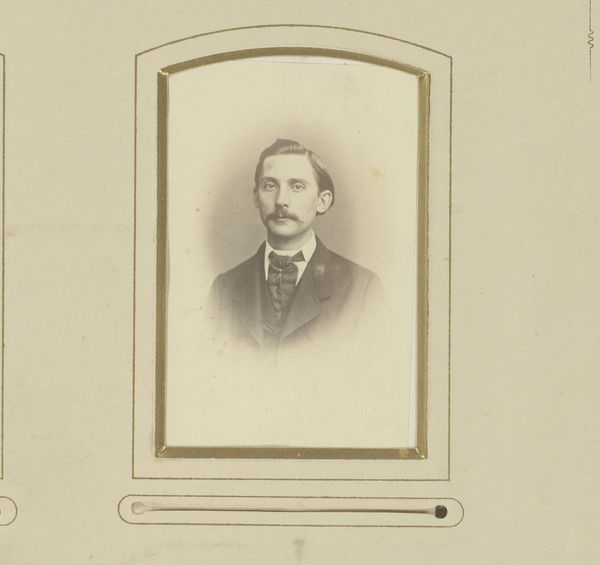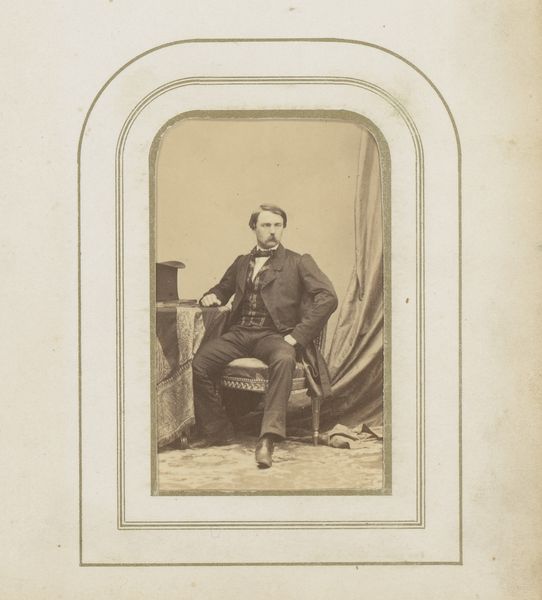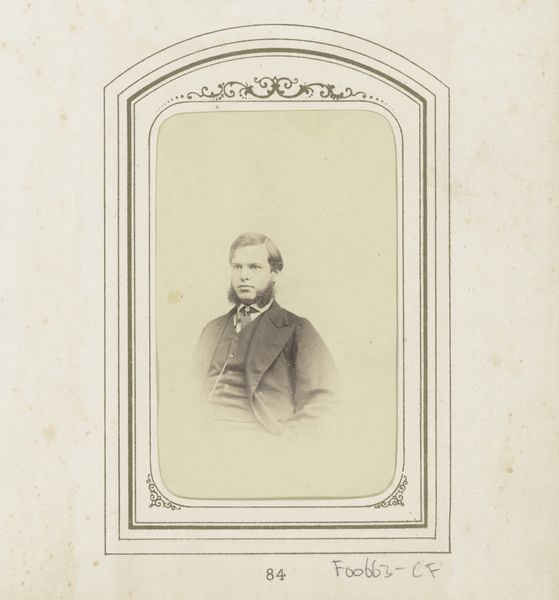
Portret van O. van Rees, hoogleraar in de faculteit Rechtsgeleerdheid aan de universiteit van Utrecht 1860 - 1868
0:00
0:00
photography
#
portrait
#
archive photography
#
photography
#
genre-painting
#
academic-art
Dimensions: height 100 mm, width 60 mm, height 523 mm, width 354 mm
Copyright: Rijks Museum: Open Domain
Curator: Take a moment to consider this piece, "Portret van O. van Rees, hoogleraar in de faculteit Rechtsgeleerdheid aan de universiteit van Utrecht," created sometime between 1860 and 1868 by A.A. Vermeulen & Co. It's a compelling example of early photography. Editor: It's sepia toned, lending it a wistful and perhaps melancholy aura, don't you think? The portrait is formal, posed, but with a very distinct, and seemingly stern, figure depicted within it. Curator: Absolutely. It is crucial to examine the context. During this period, photography studios were gaining popularity, producing portraits for a burgeoning middle class and institutions who wanted to project specific images. The materials employed—the paper stock, the chemical processes involved in developing the photograph, the studio backdrop—speak to a burgeoning industry. The figure depicted had connections to a university, perhaps that's an interesting detail too. Editor: Yes, considering its composition is just as vital. The starkness of the contrast pulls one immediately toward the subject’s face. The meticulous control of light, the sharp lines and precise detail--what meaning do you gather? Curator: The production methods and materials influenced the aesthetic outcome greatly. Mass production techniques began to evolve rapidly and photographic studios gained access to innovative tools that influenced production volume and altered our understanding of social stratification during the Victorian Era. Editor: I would be curious to examine its deeper structures of meaning, decoding the symbolism embedded within it, analyzing visual rhetoric through signs and signifiers. The formality of the pose against that muted tonality lends to a feeling of both authority and introspection. Curator: Thinking through the processes through which imagery proliferated back then provides meaningful avenues of examination. Thank you for shedding some additional perspectives with me. Editor: And thank you for emphasizing what is truly visible through historical and material analysis!
Comments
No comments
Be the first to comment and join the conversation on the ultimate creative platform.
